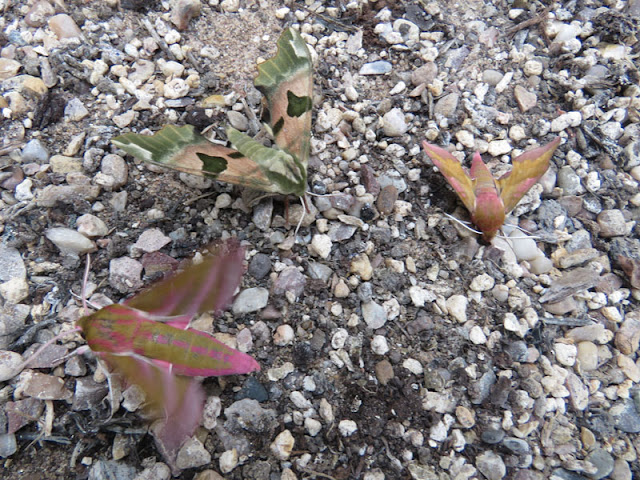I was asked a few weeks ago to lead a Durham Wildlife Trust
Botany Group outing on Waldridge Fell today, so yesterday, I did a little
reconnaissance to see what I could show them.
I did seem to spend most of my time looking amongst the
nettles and hogweed in South Burn wood than finding flowers to show them. It
resulted in getting another half dozen invertebrates on the list including my
first Ringlet butterfly of the year.
665. Agapanthia villosoviridescens (Golden-bloomed Grey
Longhorn)
666. Cantharis cryptica
(a Soldier Beetle)
667. Ditropis pteridis (a planthopper)
668. Nephrotoma flavipalpis (Yellow Cranefly)
669. Phyllobius pomaceus (Nettle Weevil)
670. Tephritis bardanae (Burdock Fruit-fly)
671. Aphantopus hyperantus (Ringlet)
 |
| Ditropis pteridis |
 |
| Agapanthia villosoviridescens (Golden-bloomed Grey
Longhorn) |
 |
| Nephrotoma flavipalpis |
 |
| Tephritis bardanae |
I did find a few things, most of which obviously I have
already found but picked up a few more, including the Wild Plum tree that I
keep walking past but forgetting to count
672. Symphytum x uplandicum
(Russian Comfrey)
673. Carex leporina (Oval Sedge)
674. Galium palustre
(Marsh Bedstraw)
675. Vinca minor (Lesser Periwinkle)
676. Prunus domestica
(Wild Plum)
677. Danthonia decumbens (Heath-grass)
678. Ranunculus flammula (Lesser Spearwort)
679. Rumex acetosella (Sheep's Sorrel)
680. Schedonorus arundinaceus (Tall Fescue)
681. Silene x hampeana (Hybrid Campion)
682. Succisa pratensis (Devil's-bit Scabious)
Set the moth trap out and got two new for the year, a male
Ghost Moth and one of the plume-moths with the English name of Triangle Plume.
Also found a mass of aphids on one of the hellebores in the garden, (though
numbers seriously depleted thanks to a finger and thumb). They looked a bit
different and a bit of research showed them to be, surprise, surprise, a
species with the English name Hellebore Aphid! Also noted I had missed counting
my only Caddis-fly I've been able to identify this year but things may be
better on that front as I may be able to get some help on some of the ones I've
photographed so far and others I catch if I keep them.
683. Platyptilia gonodactyla (Triangle Plume)
684. Hepialus humuli (Ghost Moth)
685. Macrosiphon hellebori (Hellebore Aphid)
686. Phryganea grandis (Caddisfly)
I decided to half a wander before meeting up with the group
and picked up a few more species. by the wood they is a very tall, furry mint
thats been here as long as I have. I got its identity confirmed way back then,
its Mentha x villosa (Apple-mint). Also picked up a couple of other common
species I had either overlooked or forgotten I had seen. On the Hogweed were
lots of the sawfly Tenthrido notha with their yellow underparts and on the
willows, my first Common Blue Damselflies of the year and the distinctive Longhorn
moth Nemophora degeerella.
687. Mentha x villosa (Apple-mint)
688. Solanum dulcamara (Bittersweet)
689. Polygonum aviculare (Knotgrass)
690. Tenthrido notha (a Sawfly)
691. Enallagma cyathigerum (Common Blue Damselfly)
692. Nemophora degeerella (a micro-moth)
I met up with everyone a little later and had a good three
hours, mainly checking one of the acid areas and also Wanister bog and the
pool. Everybody seemed to have an enjoyable time. We also got a few additional species as well
as some of the more interesting species I've already had and managed to show
them such as Mat Grass, Water Horsetail, Marsh & Willow-herbs, Bog
Stitchwort, Common, Oval and Star Sedges, Cotton-grass, Marsh Bedstraw, Water
Forget-me-not and Bog-bean. The new ones were
693. Ballota nigra (Black Horehound)
694. Molinia caerulea
(Purple Moor-grass)
695. Epilobium tetragonum (Square-stalked Willow-herb)
696. Lathyrus pratensis (Meadow-Vetchling)
697. Viola palustris
(Marsh Violet)
698. Stellaria graminea (Lesser Stitchwort)
And we found a few other bits and pieces as well
699. Aphelia paleana (Timothy Tortrix)
700. Timandra comae (Blood-Vein)
701. Cynips quercusfolii (Cherry Gall-Wasp
It was only was I added them all up tonight I realised I had
gone past the 700 mark - a nice surprise








































